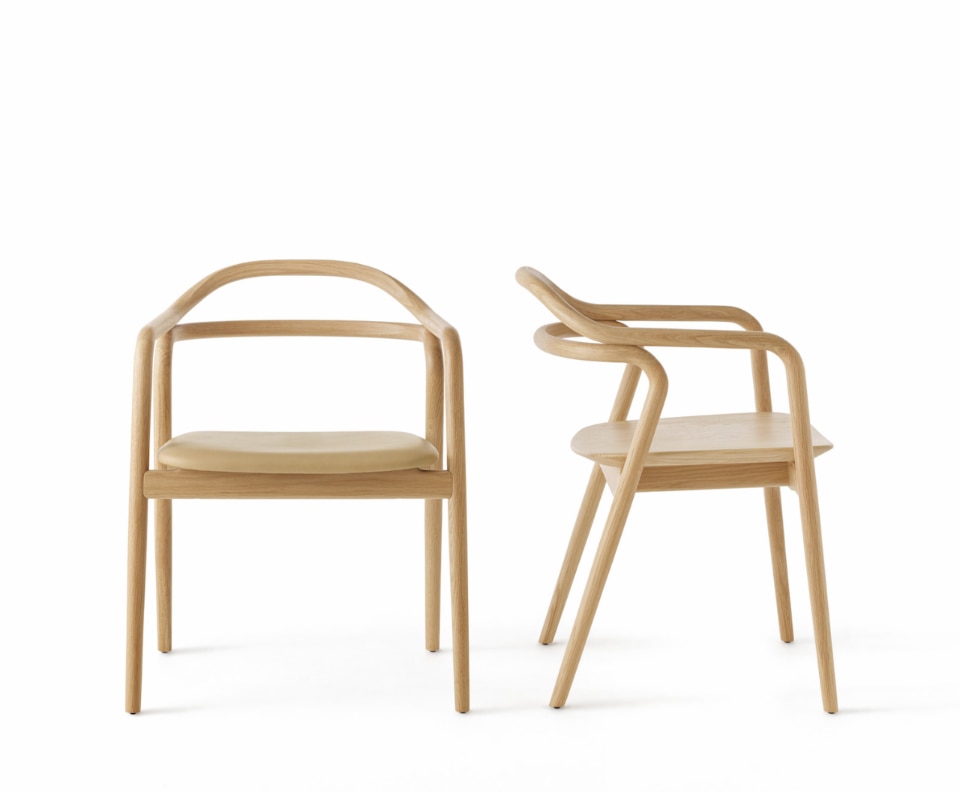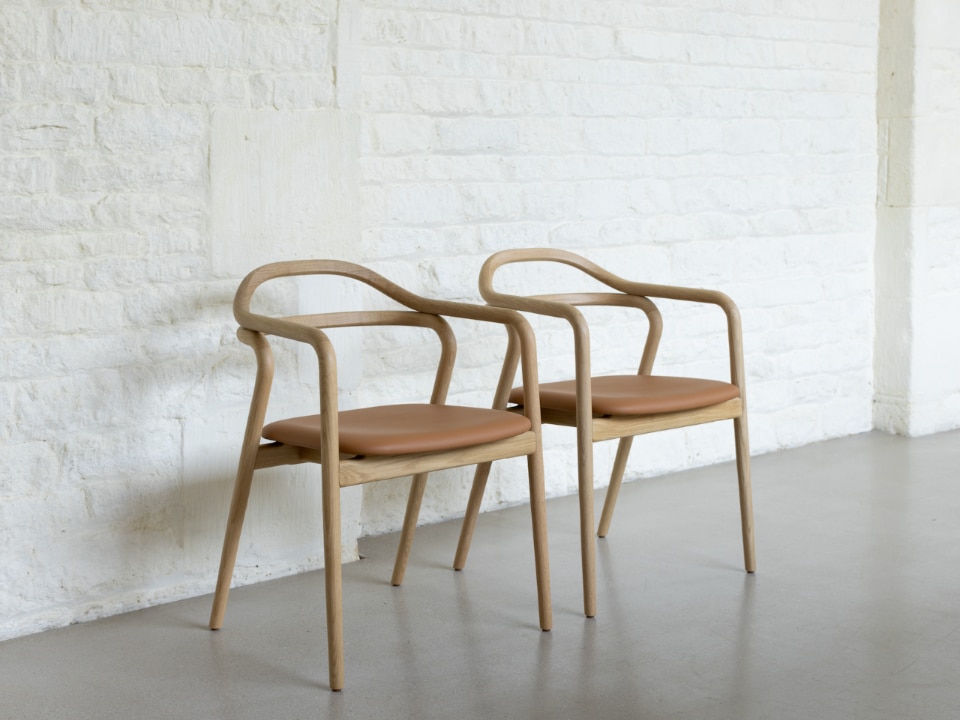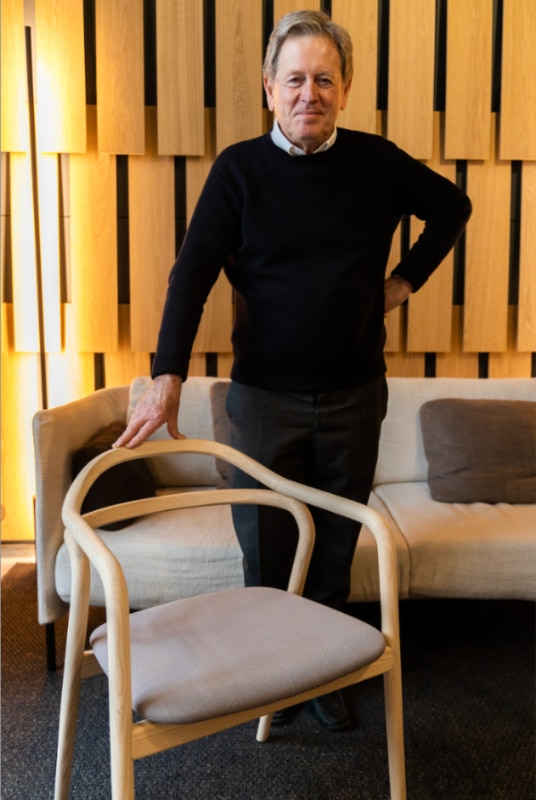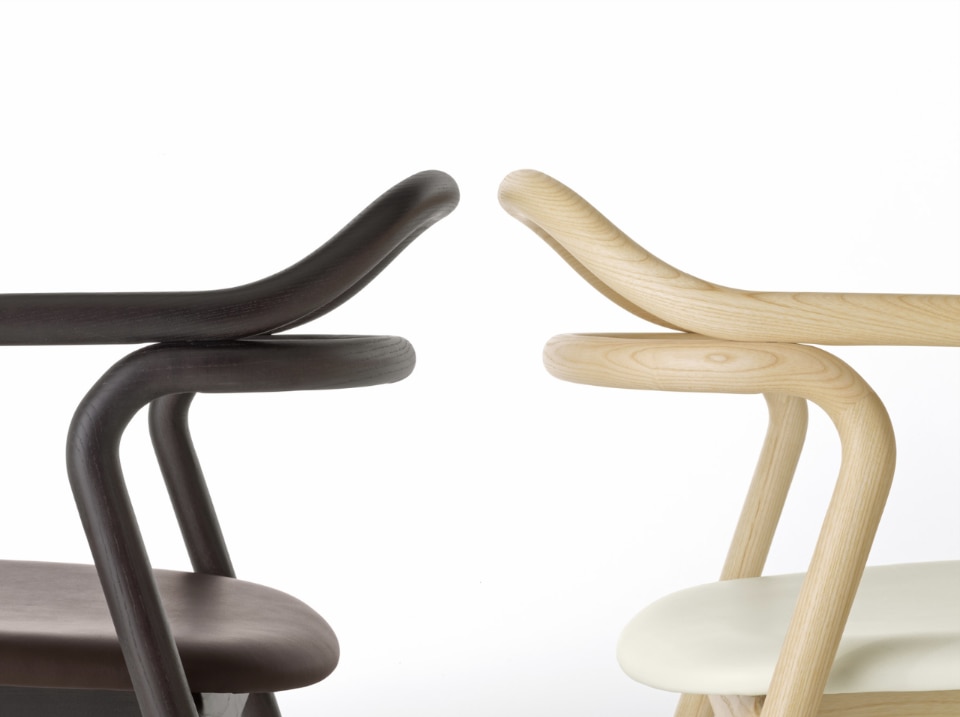What is the sense of minimalism in 2023? Does it still have one? does it still make sense to go in search of great figures to ask similar questions?
Perhaps the time has come to rid ourselves of some twentieth-century categories that have caged architectural discourse since the 2000s, and perhaps the most shocking part of all this might be discovering that this chance has been right in front of us for a long time, embodied by those very people on whom we had imposed category labels.
John Pawson – who, as Rowan Moore has written on the Guardian, “is the architect both blessed and cursed by the label ‘minimalist’ “ – has that very own style, of ironic desecration equaling Magistretti’s best interviews, as well as of a very deep mystique of design practice: and the best of all this springs out when it comes to talking about what this practice means for him, how he lives it, and how he has lived it. To the point that we had to start from what it actually means to be John Pawson, in order to question a whole way of doing architecture, today.
A first answer could be epitomized in the words “different from any expectation of unattainable asceticism”: Tacta, his recent first chair, has come about because the Friuli-based company Passoni thought of him, sent him an email, and he answered. As simple as that (as minimal?). There was a possibility in the air, Pawson took it in and instinctively followed through.
.jpg)
So there is no epic formative path, among esoteric mysticism, religions, and convents atop impassable mountains, to become fathers of minimalism. Even though, to hear Pawson’s biography, that’s exactly what happened. But not exactly in the terms in which any 2000s blockbuster would have told us the genesis of a hero: to be fair, the terms are just the opposite, human, anti-heroic terms.
“I’m from Halifax, West Riding of Yorkshire” Pawson told us “it’s in a bowl, one of the first industrialized cities because of processing of wool coming from the sheep grazing on the surrounding moor, so physically it’s a treeless landscape, and the architecture is all made from York stone. Stone walls, stone floors, stone ceilings, stone roofs. Very, very simple. And since the north of England was anti Catholic, thanks to Wesleyan preachers the Methodist Church was popular. My grandparents were Methodists by birth, so they would go to church twice on Sunday and they'd know music just by singing. My mother was living a very modest, simple life even though her family was very successful in textiles.
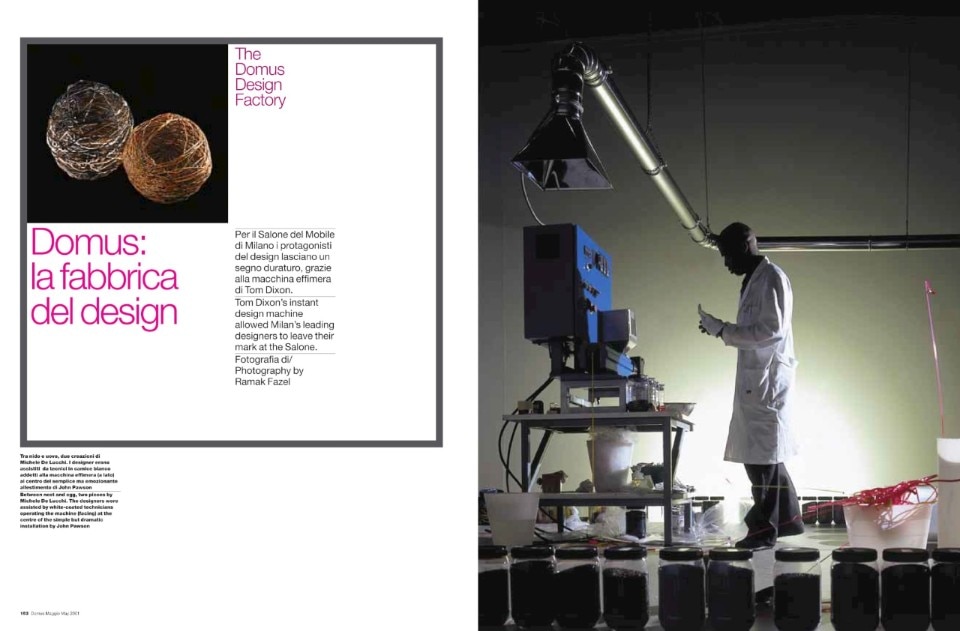
Then I went to Japan for four years, to try and be a Zen Buddhist monk, which I lasted one night. I failed completely. Then I met Shiro Kuramata, architect and designer. He was very generous to me, because he didn’t know who I was and what I wanted: I was a mystery to him, so he thought it was safer to be nice to this young boy – I was 24”.
Kuramata would then ask for advice to his friend Arata Isozaki: “He would say ‘Well, he should go to the Architectural Association school in London and learn himself’. And so that’s what I did. Still, I didn't last at that and then my girlfriend asked me to help design her flat: I did it, quite against her wishes, so that was my first project followed by her gallery, then slowly, she introduced me to clients. I’ve never wanted an office. I never wanted a career, so for the first two years, I had no files. I threw everything away. I hated having books on show and in the office. I mean, I had some but hated the idea of looking at a book for an idea”.
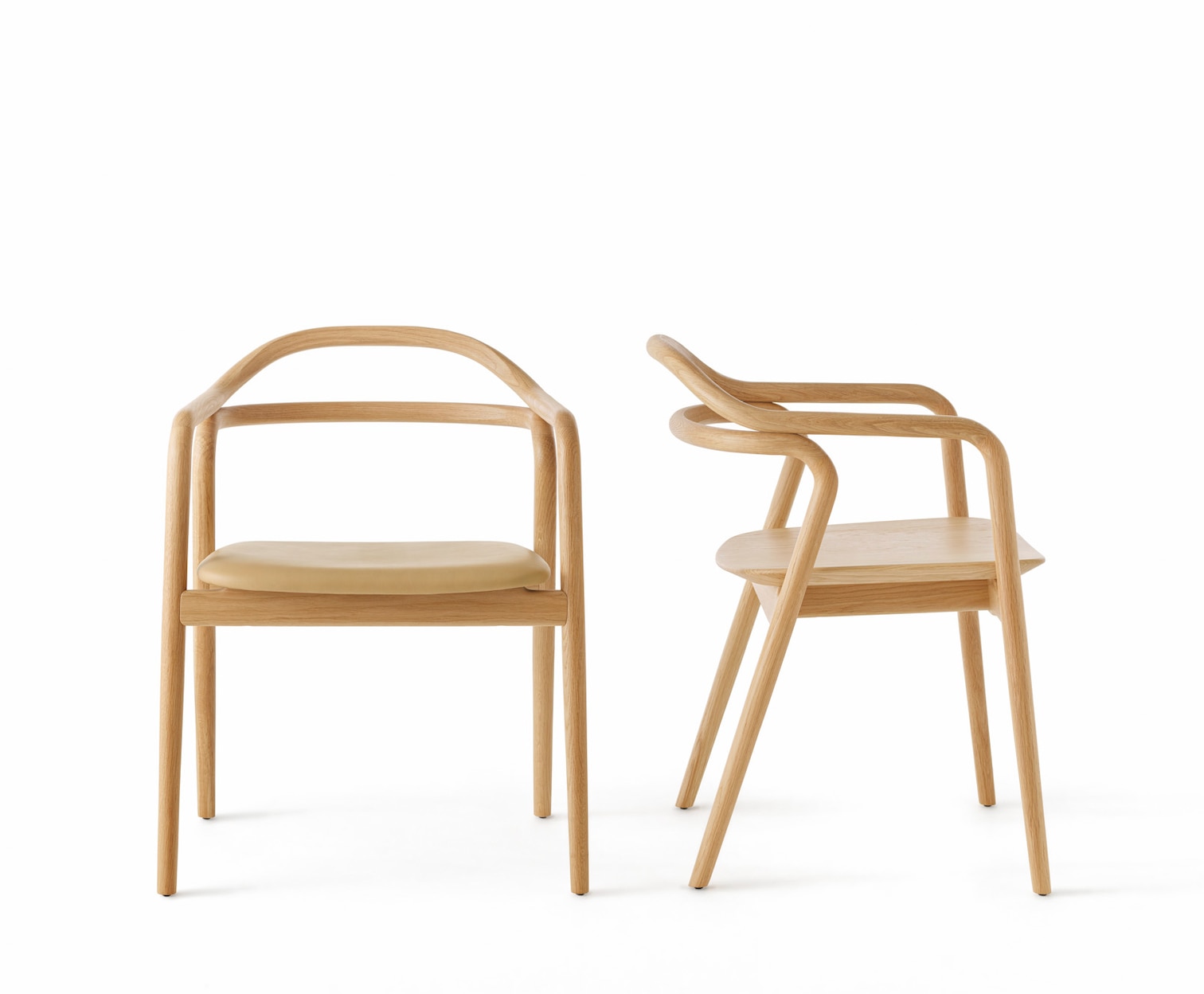
Over the years, he tells us, it has been more a matter of translating into physical form some ideas that for different reasons his mind had developed or incubated, through a continuous testing process, also related to the little inclination he says he has any non-naïve drawing technique: “The first thing I did was to have a very skilled and competent draftsperson, a girl called Lauren Leatherbarrow, from Tennessee. I would stand by her and say what I wanted, directing operations: and nothing has changed, except there are now 25 Lauren Leatherbarrows”.
I’ve never wanted an office. I never wanted a career, so for the first two years, I had no files. I threw everything away. I hated having books on show and in the office. I mean, I had some but hated the idea of looking at a book for an idea.
John Pawson
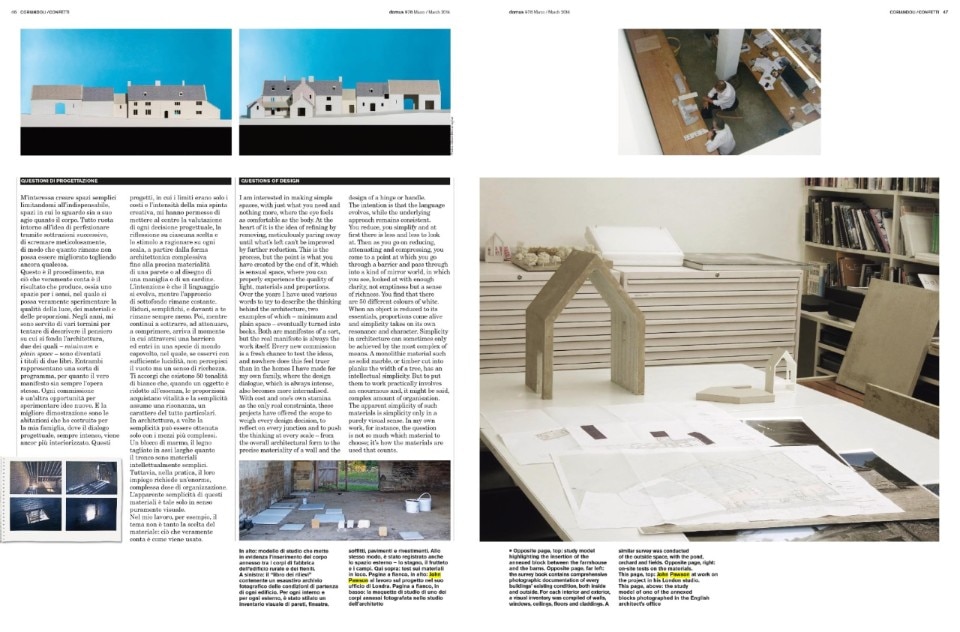
It is therefore a matter of biography, educational landscape, everyday practice. At the same time, however, “minimalism” has over the years acquired a diluted, almost clichéd tinge, quite distant from the principles Donald Judd would develop in art with his Specific Objects, so much so that we return to question with Pawson the meaning, the purpose such notion might have now, in the third decade of twenty-first century.
“I suppose it’s a Yorkshire thing,” Pawson says “but we have that expression, ‘You can’t protest too much’, like saying ‘I'm not a minimalist’ all the time, because that’s when everyone will stick that label on you. Minimalism is a misused word and also very easy to misinterpret, because you can use it for so many different things. Judd, for example: I think that if pushed, he would say he was rather an essentialist, about the essentials.
I always say my work isn’t minimal: it’s highly complex, and it’s not cheap. And it does not just mean painting it white, or taking things out. It’s a situation where everything is in harmony, and you’ve got it right. It’s not just the architecture or the interior or the things, it’s even about placing something. Of course, you absorb this over the years, but if you saw how careful a job it was to position furniture, you wouldn’t want it moving. Also, I’m not in a position to police or monitor and I wouldn't want that: I design things for the clients and then they live how they want to. But there are some that I've been to stay at, and maybe the new partner has no history or background of what I've done so he or she would fill the house with things and, well, I didn’t believe this could negate the architecture, but it’s possible”.
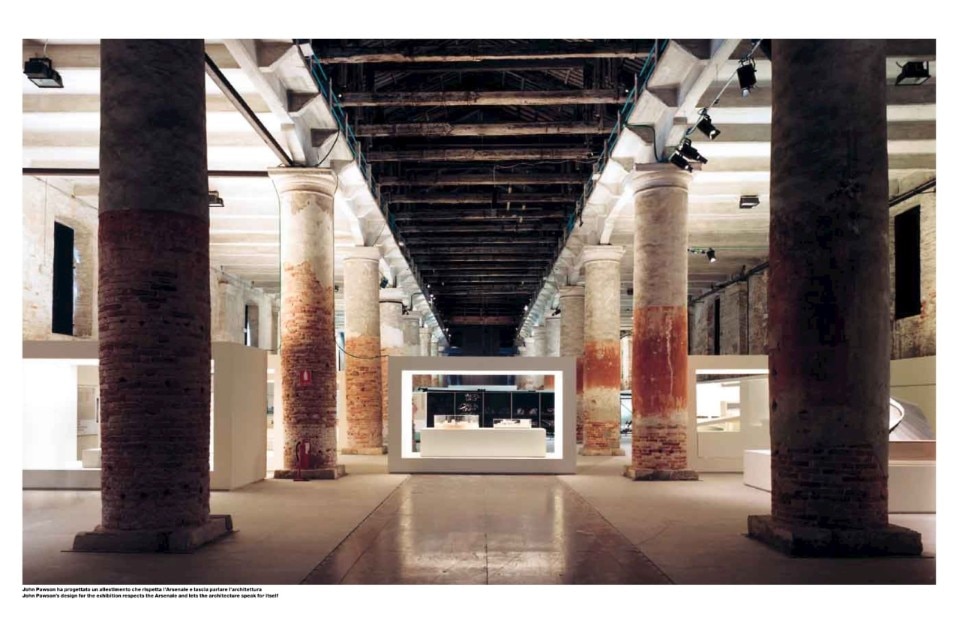
Another cliché to be confirmed or debunked is then whether such kind of approach can be simply labeled as “a thing for the rich”. Once again Pawson show a very straightforward attitude to handling such issue: “I have clients who are very wealthy, but they have to be open to what we do: when people come to us, they already want what we do. They’re not just looking for an architect. And sometimes instead they have very little money, which is absolutely fine. The problem is any valued building costs money. ‘Rich’ is relative: it’s also interesting that, no matter who they are, they are always very careful about spending.
When we started working on some religious buildings, for the Catholic monks, the monastery in the Czech Republic for instance – we are still working for them – interestingly it was the young monks who would not understand why they needed to have sophisticated architecture costing more, they’d rather do with working less themselves and study more.
The more mature monks understood instead that if you’re going to live in a workplace without leaving it, you will need the architecture to be of a certain quality: if it’s going to last forever, it needs to be special”.
I always say my work isn’t minimal: it’s highly complex, and it’s not cheap. And it does not just mean painting it white, or taking things out. It’s a situation where everything is in harmony, and you’ve got it right.
John Pawson
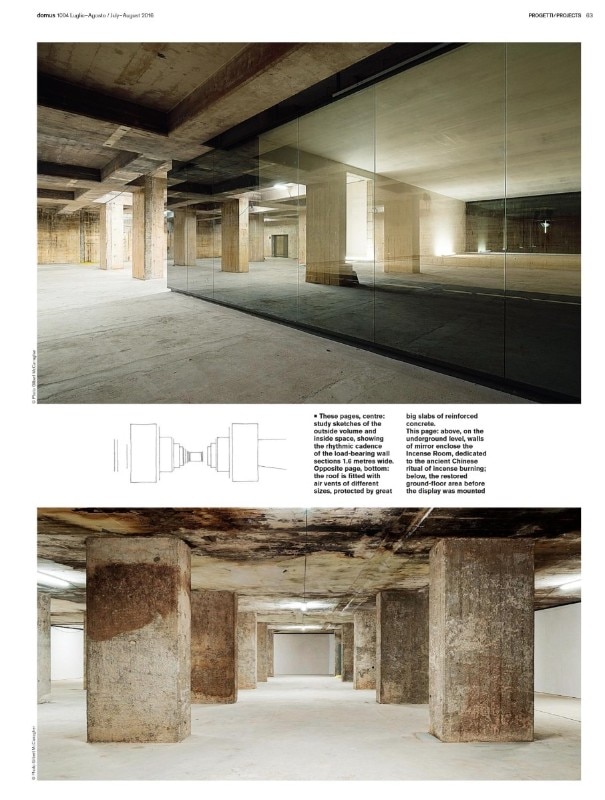
A quarter of Pawson’s work is now religious buildings, with the monastery being the project of a lifetime for him. He even stayed there for some weeks living in a dormitory, to share life with monks: he finally managed to stay in a monastery, it was just about which one.
The rest of his work is balanced between private houses, a hotel for Ian Schrager, a winery; even furniture has a place now, the exploration of different scales, but buildings keep a priority place: “if it’s a building, you can’t move walls. If you do, you get into a lot of trouble. I used to do it if I didn’t like it, when I was young and impetuous, moving walls, lowering ceilings or beams: there's some well documented fights about it, and I'm not going to do it again. Now I listen. I'm a good listener”.
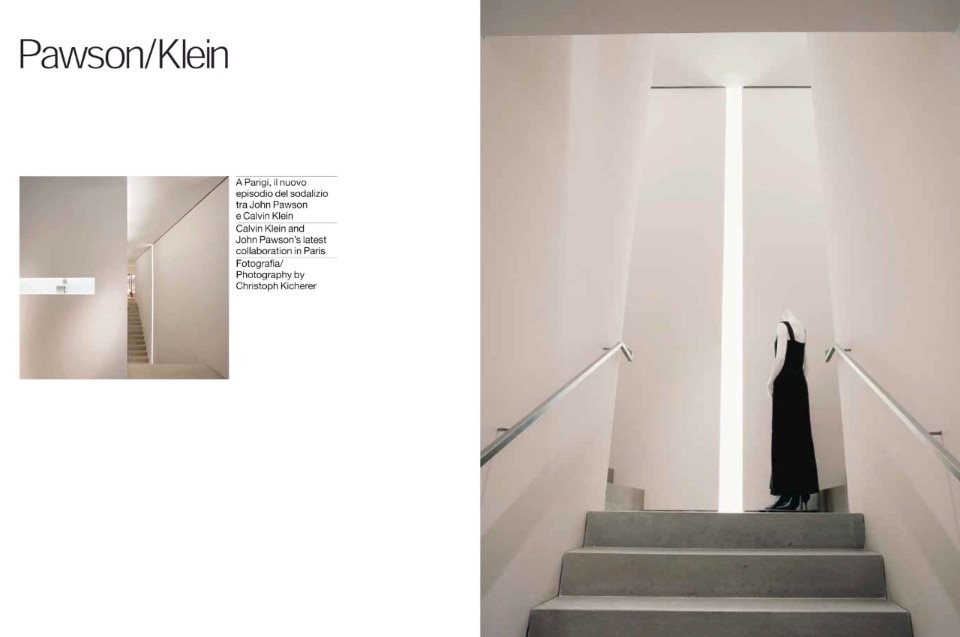
And before we parted, Pawson would once again twist the plot of our conversation and, we’d dare say, the history of minimalism, with some very Domus-related news: “When I was working with my father up in Newcastle, there was an art school, where Brian Ferry went and Richard Hamilton taught, – it was 1968 or ‘69: they had the first copy of Domus that I ever saw, and it was exciting because it had a lot of things that I never saw, you know, I was isolated, and I saw Kuramata’s work for the first time on Domus. I was about 18. Then in 1974 I went to see him”.
It's hard for us not to think proudly that we actually created something, if not someone, hard to resist the temptation of titles such as We created John Pawson. “No, you can!” he would just answer. “It would be true”.
When I was working with my father up in Newcastle, there was an art school, where Brian Ferry went and Richard Hamilton taught (...) and I saw Kuramata’s work for the first time on Domus.
John Pawson
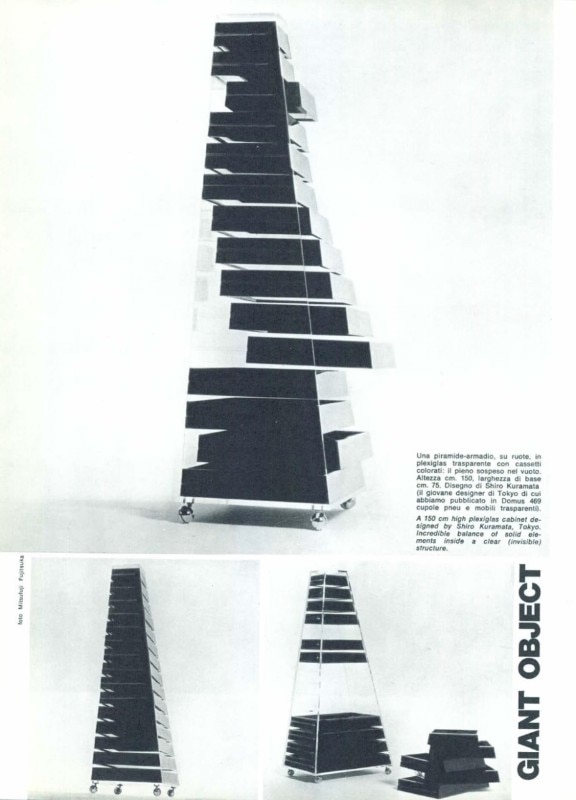


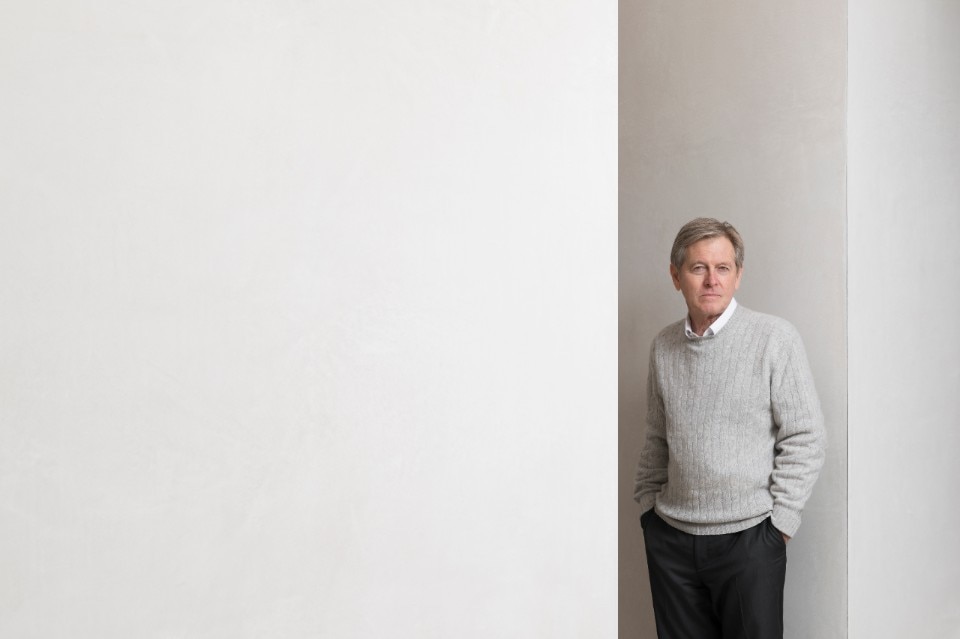

.jpg.foto.rmedium.png)
.jpg.foto.rmedium.png)
.jpg.foto.rmedium.png)
.jpg.foto.rmedium.png)
.jpg.foto.rmedium.png)
.jpg.foto.rmedium.png)
.jpg.foto.rmedium.png)
.jpg.foto.rmedium.png)
